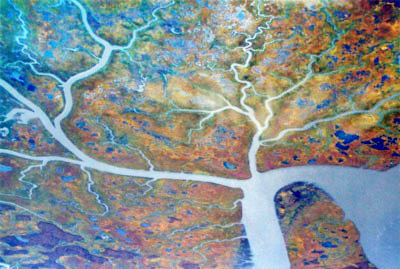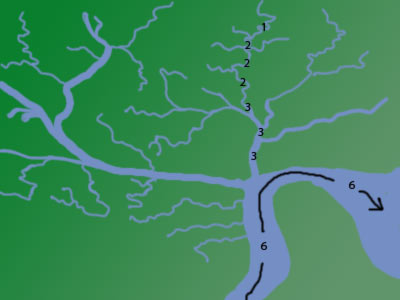Counting Streams

Let’s face it, stream biologists count funny. If I’m walking down a stream, from headwaters to where it enters a large river, I’m likely to count something like this:

With a few simple rules, you too can learn to count this way. Here are the rules:
- Every headwater stream is a “1”, or as we prefer to say, “first order”. That means nothing feeds into it. In a natural environment it might come from a spring or a seep or a wetland. In an urban environment, it might come from a culvert or a parking lot channeling water to one area.
- Where two first order streams meet, they make a second order stream. Second order streams obviously tend to be bigger and more robust than first-order streams. So far, 1+1=2, but don't get lulled into thinking it will stay that way
- Here’s where it gets tricky. Where a 1st and a 2nd order stream come together, they do NOT make a 3rd order stream. That’s because the 1st order only adds a little water to the larger 2nd order stream. In fact 2nd order streams can get rather large if they keep receiving more and more 1st order streams along their length, until...
- When two streams OF THE SAME ORDER join up, then the stream order increases by 1. So, 2+2=3.
- And two 3rd orders make a 4th order, or 3+3=4.
- But when the 4th order stream enters a largish river (6th order) ... nothing happens. Not to stream order, anyway. The river is still 6th order, because the stream has only added a little water proportionally. The river would have to meet up with another 6th order before it would be promoted to 7th order. In other words, 6+1=6 and 6+2=6 and so on, all the way until 6+6=7.
Copyright University of Maryland, 2007
You may link to this site for educational purposes.
Please do not copy without permission
requests/questions/feedback email: mathbench@umd.edu